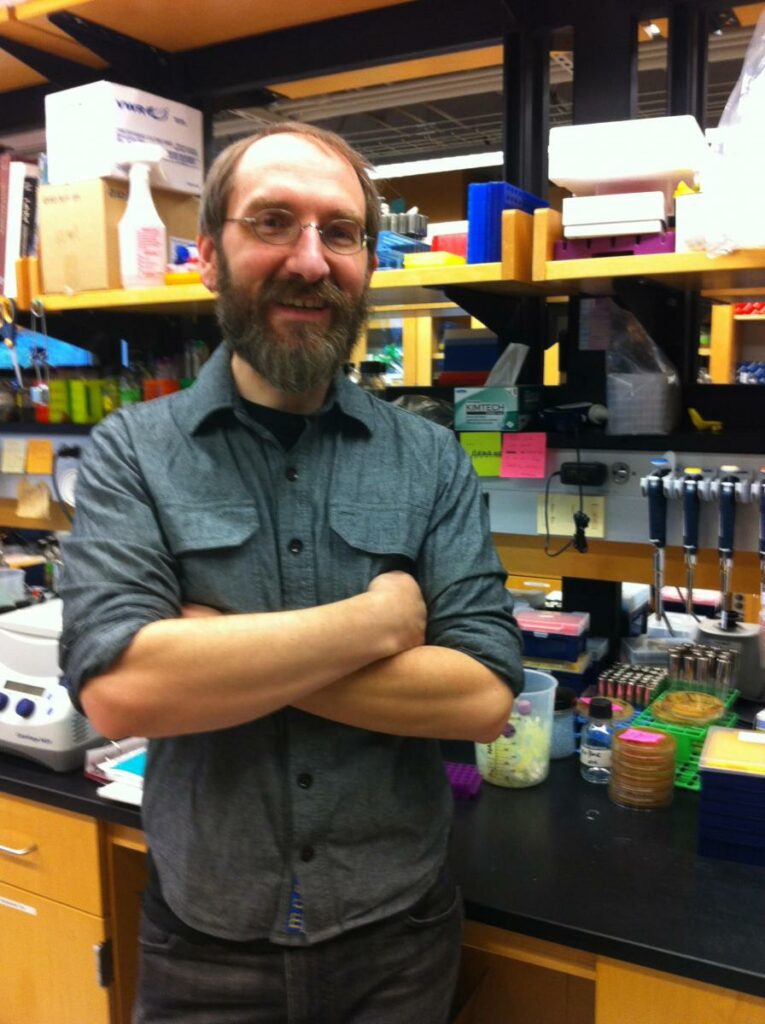By: Olivia Rowland, WIC GTA
For its winter events, WIC brought Dr. Vershawn Ashanti Young, who goes by dr. vay, to give a talk on anti-racist writing instruction and lead a workshop on code-meshing. The recaps of both events below outline key concepts and action steps you can take to implement anti-racist practices in your own teaching.
Teaching to Redress
dr. vay gave his talk, entitled “Teaching to Redress: Using the Myth of Canadian Exceptionalism to Pursue Anti-Racist Writing Instruction in Rhetoric and Composition,” on February 24th to an audience of more than 200. He opened the lecture by offering a Black Body Acknowledgment, a concept dr. vay created that is modeled on Indigenous land acknowledgments. A Black Body Acknowledgement serves three purposes: acknowledging Black people’s oppression, committing to challenging that oppression, and asking audience members to join the commitment to anti-racist work. dr. vay’s own Black Body Acknowledgement called upon his audience to be open to transforming their perceptions of linguistic diversity.
The rest of dr. vay’s talk provided arguments against white-centered pedagogies and in favor of accepting different linguistic varieties. dr. vay explained that dominant pedagogies are harmful because they fail to recognize marginalized rhetorical traditions and assign “linguistic deficiency” to certain BIPOC students. These pedagogies teach students that dialects associated with white people, often referred to as “Standard English,” are more effective for communication than dialects associated with BIPOC communities. In fact, dr. vay argued that BIPOC dialects may be precisely the languages we need to challenge colonialism and systemic racism.
Although many writing instructors worry that their students will need to speak Standard English later on, and that they would be denying their students a chance at success by letting them write in their own dialects, dr. vay contended that instructors should not become “proxies” for teachers down the hall or for their students’ imagined future employers. Instead, writing instructors can teach their students that the idea of Standard English itself is a myth, because everybody mixes dialects, or “code-meshes,” when they write and speak. Students can then become advocates for their own language and make their own decisions about how to use their languages in different contexts.
Ultimately, dr. vay emphasized that teachers of writing must be open to learning about anti-racist pedagogy through education as well as trial and error, and must remain willing to challenge their own beliefs. He recommended that instructors create their own Black Body Acknowledgement, which can be given in class or put on a syllabus. dr. vay also suggested some resources for instructors to educate themselves and center BIPOC voices, including his own textbook, This Ain’t Yesterday’s Literacy: Culture and Education After George Floyd; The Routledge Reader of African American Rhetoric, co-edited by dr. vay and Michelle Bachelor Robinson; and Aja Y. Martinez’s Counterstory: The Rhetoric and Writing of Critical Race Theory.
Code-Meshing, Code-Switching, and Black Standard English
On February 25th, dr. vay gave his workshop on “Code-Meshing, Code-Switching, and Black Standard English: Implications for Classroom Writers.” To begin, he asked participants to reflect on whose voices influence their approach to linguistic diversity. Is it linguists, whose research shows that all dialects are grammatical and have equal potential for effective communication? Is it Black students, whose experiences demonstrate the harm of dominant approaches to language? Or is it “the teacher down the hall,” who argues that some harm is necessary for students’ success?
dr. vay invited participants to listen to linguists and Black students and to be open-minded about code-meshing. His concept of code-meshing refers to the practice of “combining dialects” with Standard English in professional, academic, and everyday contexts. Along with translingualism, or an understanding of language as “fluid” and “negotiable,” code-meshing asks that we view language not as a “barrier,” but always as a “resource” for communication. Instructors should not aim to protect students from future discrimination, but to help students become more effective communicators—and that means teaching code-meshing.
The workshop also stressed the importance of challenging dominant ideologies that promote linguistic discrimination. Rather than refer to certain dialects as “non-standard,” dr. vay suggested calling them “undervalued.” He also engaged participants in a mind-mapping activity in which participants identified their different linguistic resources and saw in their own lives how everybody already code-meshes.
In addition to the mind-mapping activity, dr. vay offered several suggestions for approaching code-meshing in the classroom. These include putting a pedagogical mission statement on the syllabus, having students find examples of code-meshing in published academic texts, using grading contracts, and working with other faculty to continue learning about anti-racist work. dr. vay identified two texts that can jumpstart this learning process: his co-authored collection, Other People’s English: Code-Meshing, Code-Switching, and African American Literacy, and the CCCC statement “This Ain’t Another Statement! This is a DEMAND for Black Linguistic Justice!”

